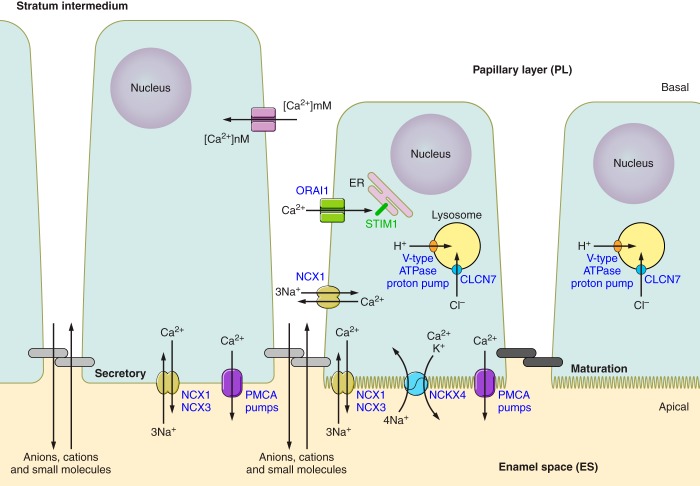FIGURE 13.
Proposed model for Ca2+ handling by ameloblasts. Secretory ameloblasts (Sec.) have either passive and/or SOCE for Ca2+ uptake. Extrusion at this stage is mediated largely by plasma membrane Ca2+-ATPases (PMCAs) or sodium/calcium exchangers (NCXs). Ca2+ uptake in maturation (Mat.) stage RA occurs largely via SOCE. STIM1 has a wide distribution throughout the endoplasmic reticulum (ER), and ORAI1 is found in the plasma membrane of RA. Sarco/endoplasmic reticulum SERCA2 pumps sequester cytosolic Ca2+ into the ER lumen, whereas inositol 1,4,5-trisphosphate receptors (IP3R) might be the main ER Ca2+ release channels although ryanodine receptors (RyR) have also been identified. As Ca2+ pools are depleted in the ER, STIM1 clusters enable Ca2+ entry via the ORAI1 channel. Extrusion in RA is mediated principally by NCKX4, with NCX1, NCX3, and PMCA also playing a lesser role. In SA cells, STIM1 is nearly absent, and the localization of NCKX4 changes becoming internalized which is predicted to alter Ca2+ transport during SA phase. A dark gray double capsule represents a tight junctional complex at the apical region of RA, and a light gray double capsule represents a “leaky” junctional complex at the apical region of SA.

